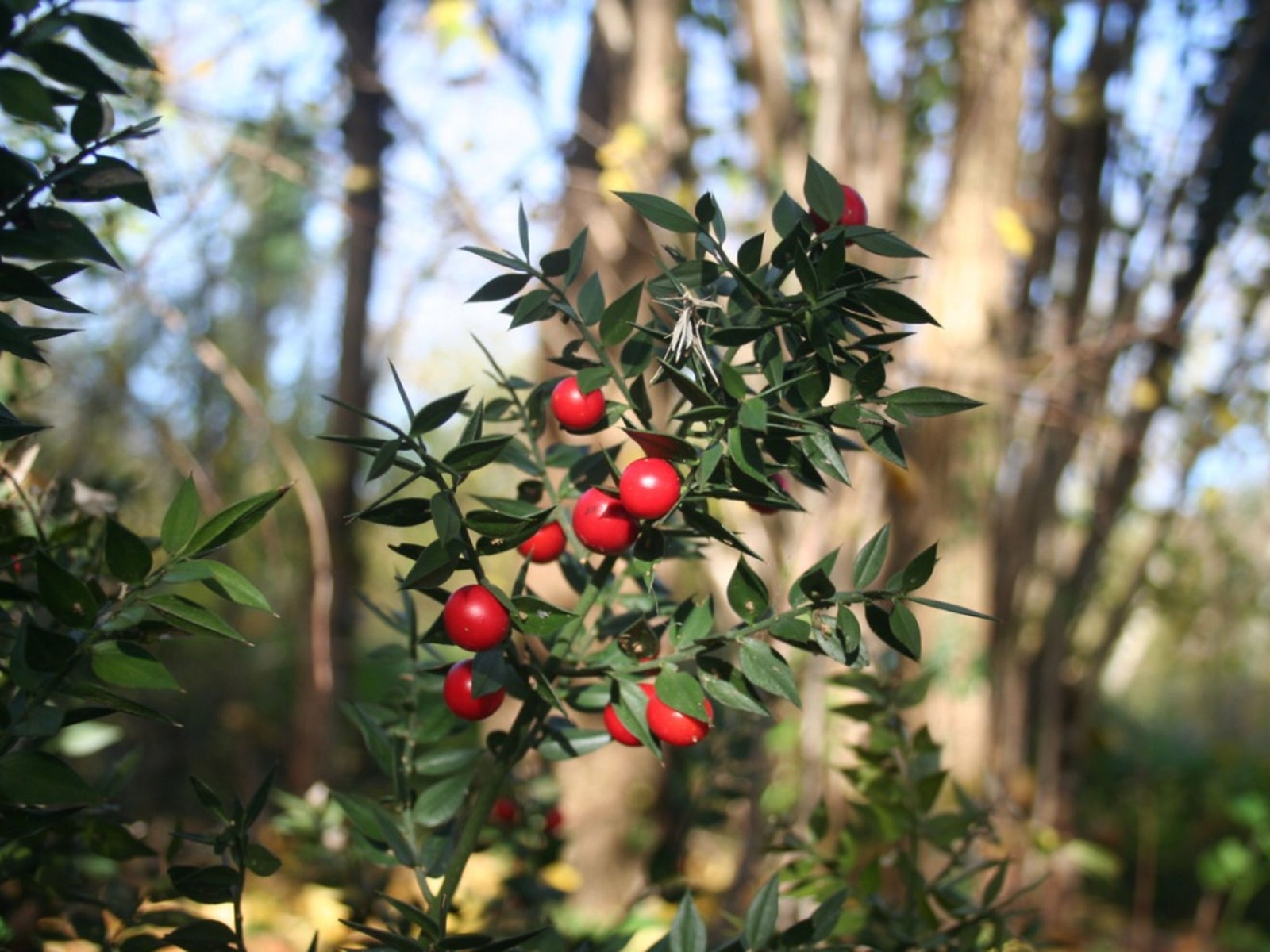Butcher's Broom Care - Information And Tips For Growing Butcher's Broom


Butcher's broom plant is a tough little shrub that tolerates almost any condition except full sun. Suitable to U.S. Department of Agriculture plant hardiness zones 7 through 9, it has a number of landscape uses, and you can grow it in containers or in the ground. Growing butcher's broom is easy, even in the deepest shade.
What is Butcher's Broom?
Butcher's broom (Ruscus aculeatus) is a small, evergreen shrub, called a sub-shrub. It naturally forms a neat mound. The tip of each leaf is a sharp spine. Small, plain flowers bloom in spring, and they are followed by bright red, waxy berries. The berries ripen anytime between late summer and winter. The shrub is native to the forests of Europe. It is also called knee holly because it grows only 1 to 3 feet tall (30 to 91 cm.) (or knee high) and it is prickly. The name butcher's broom comes from an old use of the plant. Butchers used to tie a bundle of branches together and use it as a broom to clean off carving blocks.
How to Use Butcher's Broom
Butcher's broom's tolerance for dense shade and ability to compete with tree roots for moisture and nutrients makes it ideal for gardens planted under trees. Use it as a small shade-loving shrub anywhere you can - as a ground cover, in woodland areas, and as a foundation plant on the north side of a house. The stems make lovely and durable greenery for cut flower arrangements, and they are available year round. When you cut stems in late fall or early winter, you can store them in the refrigerator for up to five months. The stems and foliage dry well for everlasting arrangements. The greenery is especially lovely when the berries are on the stems.
Butcher's Broom Care
Butcher's broom does well in soil with acid, alkaline or neutral pH. It grows almost as well in clay, chalk or sand as it does in loamy soil. The flowers on some plants are self-fertile, but you'll get more and better berries if you plant both a male and female plant. Although butcher's broom tolerates drought, it grows best if you never allow the soil to dry out. Fertilize with a balanced and complete dry fertilizer in spring and midsummer, or use a liquid fertilizer every other month. Cut out the dead stems at the bottom of the plant each spring.
Sign up for the Gardening Know How newsletter today and receive a free copy of our e-book "How to Grow Delicious Tomatoes".

Jackie Carroll has written over 500 articles for Gardening Know How on a wide range of topics.